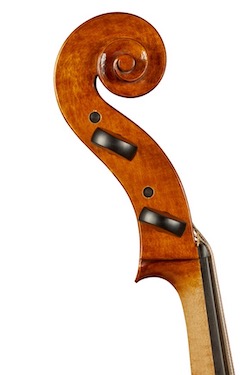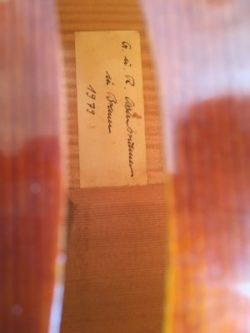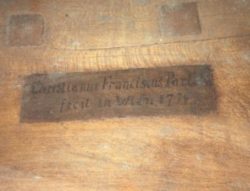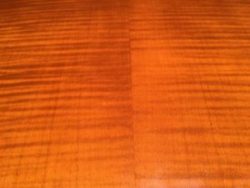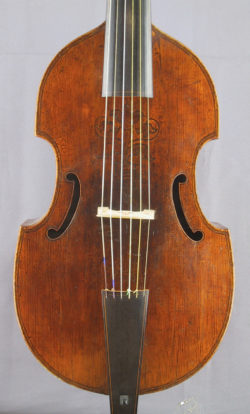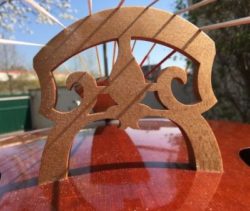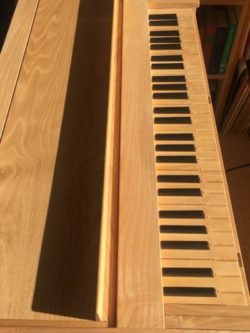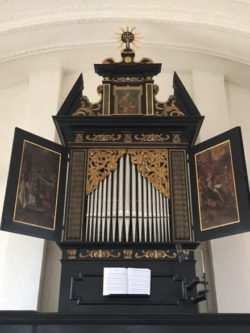
This viol by Hannß Khögl is an astounding instrument: it is highly resonant and powerful, it has a radiant singing quality in the treble and a ligneous core to its sound. The instrument is fairly heavy and solidly built in comparison to French or English viols, copies of which we are mostly playing nowadays. The back and ribs are made of wild slabs of ash; the table has two broad c-holes positioned close to the edges and a delicate rose. Khögl’s viol was made for competing with trombones, cornettos and violins, playing figural church music on the gallery of the main church of Kremsmünster abbey.
The viol was built in 1674 by the Viennese violin maker Hannß Khögl for the Benedictine Abbey in Kremsmünster and according to the account books of the abbey it cost 15 florins. The instrument was part of a complete set of string instruments by Khögl at the abbey, which consisted of three bass viols, two tenor viols and two violins. Apart from a repair in the early 18th century when the viol got a 7-string set-up, the viol has survived the last centuries without any substantial changes. This is truly exceptional in terms of old viols: most »historical« viols were turned into cellos and then converted back into viols in the 20th century.
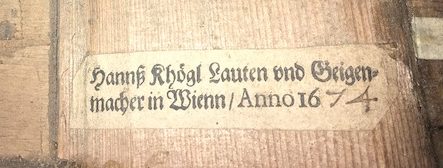
Hannß Khögl was born on 20 September 1614 in Füssen (Allgäu). Presumably, he was forced by the Thirty Years’ War to abandon his hometown. It remains uncertain when he arrived in Vienna. In 1688 he married Maria Lank in the Stephansdom and the following year he acquired Viennese citizenship. Khögl died on 13 September 1680 in Vienna.
Six viols, one baryton and three violins by Hannß Khögl are known to have survived today. Three ‘siblings’ of this bass viol from Kremsmünster Abbey were given to the Oberösterreichische Landesmuseum (today: Schlossmuseum) Linz in 1836. Only this bass and one tenor viol stayed in the possession of the abbey until today. Viktor is tremendously grateful to the abbey and Pater Altman Pötsch OSB for the permission to play on this wonderful instrument. The specific sound of this viol is a sheer revelation when performing 17th-century solo works and chamber music from South Germany and Austria.

Bibliography: Altman Kellner, Musikgeschichte des Stiftes Kremsmünster, Kassel 1956 ••• Klaus Martius, “Hans Kögls Streichinstrumente”, in Füssener Lauten- und Geigenbau, ed. by Josef Focht, Klaus Martius and Thomas Riedmiller, Leipzig 2017, p. 130–135.
